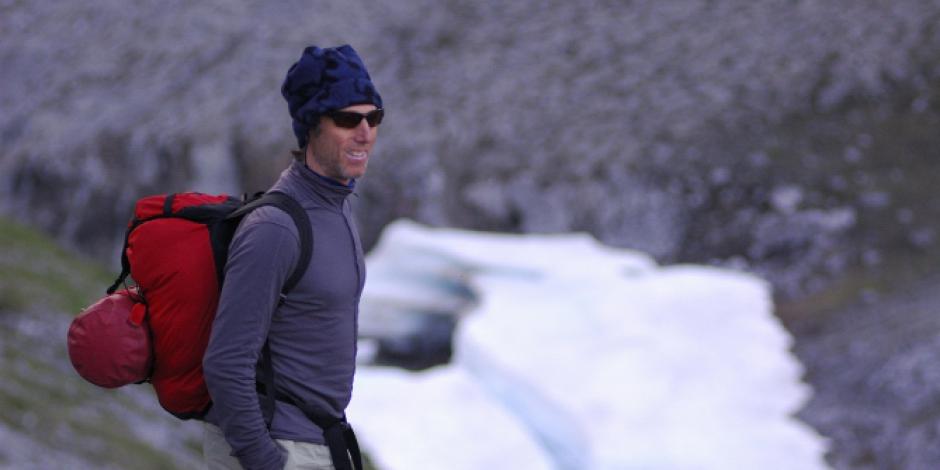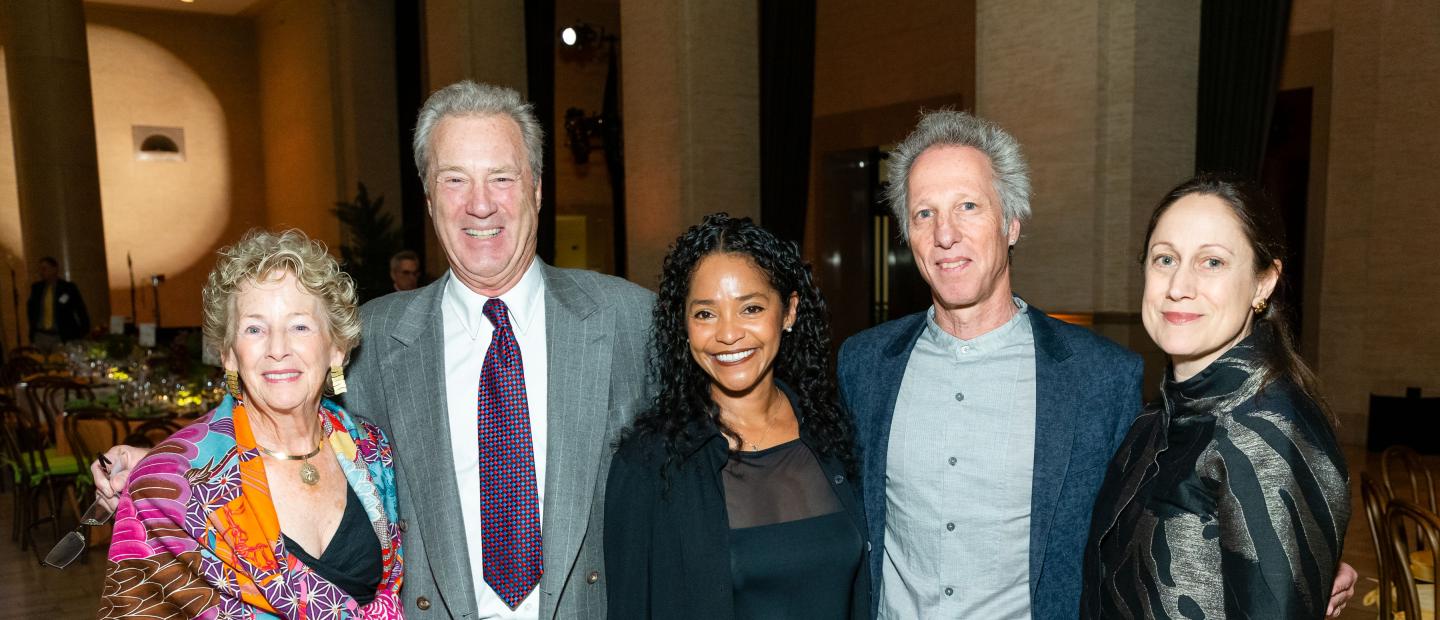Innovation Through Disruption with Board Chair Ian Yolles

I wanted to call this piece “Spotlight on Ian Yolles: NatureBridge’s Board Chair,” but after my conversation with him, I felt it wouldn't be accurate. To write a “spotlight” piece about someone as humble as Ian Yolles doesn’t feel right; he shunned the spotlight at every opportunity to speak about himself, instead focusing his energy and enthusiasm on his fellow board members and the organization that he has helped to shepherd since joining the NatureBridge Board of Directors in 2012.
“We have a fantastic group of board members. It's a diverse board, there's deep experience and there is real passion for what the organization does,” he says. “As a board chair, it's not up to me to dictate the direction or create mandates. I really see my role as drawing out the collective intelligence of the board; to create an atmosphere and environment that really allows for open dialogue and transparent exchange.”
Ian’s path to the NatureBridge Board of Directors is unusual. Most nonprofit organizations find new board members through existing board members or leadership staff; a friend who works in an adjacent organization, a colleague from a previous job, a former classmate at a respected institution.
This was not how Ian joined.
“One day, I was in my office and the phone rang, and it was Susan Boren. She was cold-calling on behalf of NatureBridge,” says Ian. “I had never heard of it.”
The Board of Directors, chaired by Steve Lockhart at the time, had done something out of the ordinary for a nonprofit: it had hired Spencer Stuart, a consulting firm specializing in leadership and talent solutions, to conduct an executive search to add new board members.
“They felt as though they had, to a certain extent, reached the limits of their natural networks in terms of identifying potential board members. Part of the impetus for utilizing an executive search to find candidates was to expand the geographical diversity of the board because NatureBridge was developing more of a national profile and most of the board members were in the Bay area or up and down the West Coast,” Ian says.
When Susan Boren, a partner at Spencer Stuart, described NatureBridge’s mission, vision and goals to Ian on that phone call, he knew immediately it was the right fit.
That mission — to connect young people to the wonder and science of the natural world, igniting self-discovery and inspiring stewardship of our planet — was already close to Ian’s heart. Before overseeing marketing and brand building for companies like Patagonia and Nike, Ian began his career as a wilderness instructor for Outward Bound in Canada, eventually becoming Executive Director of the outdoor education nonprofit. He had intimate knowledge of the transformative power of nature, and he could see that NatureBridge was expertly tapping into that power to further environmental science and inspire awe.
“An interesting side note: Susan got to know Steve Lockhart and other NatureBridge board members during this search process, and she subsequently became a board member and has made an enormous contribution,” he says.
Fittingly, it is Susan who is in line to become NatureBridge’s Board Chair in May 2022 when Ian’s term ends.

In Ian’s six year term of leadership, the organization has faced numerous crises — wildfires, campus closures — the biggest of which spurred Ian’s proudest accomplishment.
“Certainly one of the proudest accomplishments, and it's still a work in progress, is navigating our way through this pandemic. I'm confident that we are going to come out the other side, and I'm confident we're going to come out as a stronger organization. That's no small feat in the field of outdoor education. There are unfortunately a lot of examples of organizations that have not been able to weather the storm.”
When lockdowns in the U.S. first began in March 2020, it was clear to those within NatureBridge that the implications were grave. At the time, about 70% of NatureBridge’s revenue came from schools paying to attend programs, with an additional 30% generated from fundraising activities, largely to support scholarships. Staff and the board acted quickly as lockdowns commenced, making long-term and often painful decisions in order to ensure the organization's survivability.
“In addition to the staff’s very quick response, I think the board really galvanized and came together, and over the past two years, I'm very happy to say we've seen tremendous board engagement — whether it's the finance committee, the fundraising committee — really tremendous.”
The board started meeting virtually and increased the cadence of those meetings, focused not only on fixing the immediate financial problem related to the loss of programs, but also on potential opportunities.
“In the midst of this crisis where we had to make some pretty bold decisions and some very painful decisions, we also thought about how we could use the moment to catalyze programmatic innovation,” Ian says. “We engaged a number of board members across not only the national board but from our various regional boards, and that's what began a whole conversation around the concept of distance learning.”
Distance learning became a key part of NatureBridge’s offerings while in-person programs remained shuttered. It only took a few months for a prototype to be designed, executed and offered to schools as a way to keep kids engaged with the outdoors and environmental science, even when they couldn’t travel to places like Yosemite or Prince William Forest.
“We're still in the learning process; a process of experimenting and iterating,” says Ian. “Virtual engagement will never replace the in-person experience, but can we augment it? Can we spark curiosity prior to students visiting our campus in a way that will actually deepen their experience? And is this something that can be a lighter touch experience for students who aren’t able to get to one of our campuses? We could reach more kids across the country this way. It’s all incredibly intriguing.”
Ian played a role in another crucial part of NatureBridge’s success these past several years in the form of helping to select a new CEO.
“I was asked by the board to step into the chairperson role when we were at a transitional phase in terms of the leadership of the organization. We’d begun the search for a new CEO, but I did not know who that would be when I agreed to become board chair,” he says. “In some ways, it was a little bit of a risk on my part, but I think NatureBridge was extraordinarily fortunate, because Phil [Kilbridge] has proven to be a very strong, adept, capable leader who's really helped navigate the organization through some challenging times.”
Ian and Phil’s relationship as board chair and CEO, respectively, has evolved over the years, but the support remains the same.
“That type of relationship is predicated on a fundamental idea: if the primary leader at a staff level is successful, then I think the organization as a whole is going to be successful. So if I translate that to my role as the board chair, it causes me to really remain focused on helping Phil be successful as the CEO.”
Certainly one of the proudest accomplishments, and it's still a work in progress, is navigating our way through this pandemic. I'm confident that we are going to come out the other side, and I'm confident we're going to come out as a stronger organization.Ian Yolles
With a different board or a different board chair or another CEO, would NatureBridge have flourished amidst the pandemic? Would it have risen above the dire circumstances that shuttered many other nonprofits? Nothing is certain. What we do know for certain is that Ian Yolles has played an integral part in providing solutions, recognizing opportunities, bringing out the best in his peers and expanding the possibilities within NatureBridge.
As Ian steps down as chairperson, what does he see in the near future? Much like the rest of the organization’s leadership, he isn’t just focused on getting through the pandemic.
“Increasing our organizational focus on equity, inclusion and diversity (EI&D) will be a critical part of NatureBridge's evolution,” he says. “Nature itself is complex, dynamic and interdependent. Nature banks on diversity as a design principle, demonstrating that diverse systems are more resilient. Nature has proven that to support a regenerative system, diversity is critical. Not only will our EI&D investments be vital in changing traditional narratives surrounding participation in outdoor recreation, but fuller representation is also key toward protecting our landscapes. Creating space for underrepresented communities to participate in NatureBridge at all levels of the organization will create space for more people to fall in love with these spaces. The more people we can engage in EI&D efforts, the more people will be inclined to advocate for environmental protection, environmental justice and climate change.”
NatureBridge has already invested in these efforts in a number of ways, including the creation of a Director of Equity and Inclusion position (promoting Miho Aida from within to serve in that capacity) to facilitate EI&D work with the staff, board and partners; and contracting the Avarna Group to help engage the board and drive a deeper understanding of critical issues.
“Another key thing that I'd like to see us explore a little bit more is developing programs that are not dependent on a physical campus. The build out and the operational demands of having physical facilities is very costly. So what if we developed mobile programs that weren't dependent on an actual physical campus. We already have a toe in the water in this regard.”
That toe in the water is NatureBridge’s relationship with the Jack and Laura Dangermond Preserve, a 25,000-acre pristine coastal habitat in Santa Barbara County, California. The Nature Conservancy, a billion-dollar environmental nonprofit with global reach, manages the land, and contacted NatureBridge to potentially provide outdoor education programs there.
“Because — and I'm quoting The Nature Conservancy — they view NatureBridge as the gold standard when it comes to delivering these kinds of programs to young people,” says Ian.
“There are no physical facilities there like we have at our Olympic or Yosemite campuses. I think that model gives us a lot of flexibility and doesn’t require a lot of capital. It’s another very big opportunity in the evolution of our programmatic model.”
As for Ian’s own future? He will still be an incredibly engaged board member, and he will still humbly focus on NatureBridge when I ask leading questions designed to get him to talk about himself:
“The future…well, more recently, we're developing a climate science lab at our Golden Gate campus, which will have a very well thought out curriculum specifically focused on climate science. So I'm really, really excited about that,” says Ian with a big smile.

